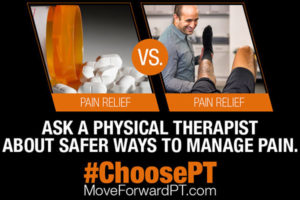The December 2016 issue of the American Physical Therapy Journal contains good news for physical therapists who work with stroke patients. An article titled “Effect of Virtual Reality Training on Balance and Gait Ability in Patients with Stroke: Systematic Review and Meta-Analysis,” by Ilona J.M. de Rooij, Ingrid G.L. van de Port, Jan-Willem G. documents the results of multiple studies that measure the results of virtual rehabilitation treatments for stroke patients. This article gives a comprehensive review of 13 studies that measure gait and stability improvements when using Virtual Reality (VR) treatments for stroke patients.
In fact, this article demonstrates that using VR training in addition to conventional therapy results in improved functional outcomes over conventional therapy alone. Some studies evaluated the effectiveness of video game platforms, such as Microsoft Xbox Kinect, Sony PlayStation 2 EyeToy, Sony PlayStation 3 MOVE, Nintendo Wii Fit, and SeeMe VR system, as well as treatments that involved walking on a treadmill while wearing a Head Mounted Device (HMD) with custom visualizations.
Examples of custom HMD Virtual Reality visualizations used in physical therapy sessions.
- Stepping over virtual images of obstacles. Participants could observe the position of their feet, monitor their knee flexion, time their toe-off, and control their stepping height and length through the HMD.
- Community ambulation including walking on sidewalks, level walking, slope walking, and walking over obstacles.
- Six different real-world videos: a sunny 400- m walking track, a rainy 400-m walking track, a 400-m walking track with obstacles, daytime walks in a community, nighttime walks in a community, and walking on trails.
Study Results demonstrate significant gait and balance improvements.
12 out of the 13 studies displayed significant improvement between Virtual Reality and control groups. Gait ability, measured most frequently by the 10 Meter walk test, showed significant improvement in 8 out of the 11 studies that measured gait. Balance also showed improvement with use of VR. 7 out 10 studies that assessed balance with the Berg Balance Score reported better results in the VR group versus the control group. Also, studies that measured balance with the Timed Up and Go test reported better results in 6 of the 7 studies.
4 Reasons Virtual Reality improves stroke rehabilitation outcomes.
So, what makes VR so helpful in improving the gait ability and balance with stroke patients? The authors present 4 potential reasons. First, “virtual reality creates patient specific motor training with a high level of repetitive and variable training.” The authors cite additional studies demonstrating the value of repetition on improvement for motor learning, so perhaps the added repetition assists in improving gait ability and balance.
Second, the authors state that “variability in practice is important for motor learning because this leads to improvement in the ability to adapt to novel situations.” Virtual Reality interventions offer a great deal of variety in a patient’s experience.
Third, the authors suggest that visual feedback provided by VR may contribute to improved balance and gait. They note that previous studies reveal that visual feedback enhances balance improvements in patients with a stroke. VR provides a great deal of visual feedback for the patient.
Lastly, the authors suggest that VR provides “improved motivation and enjoyment” which positively impacts the completion of training. In other words, fun activities have a much better participation rate than boring, repetitive interventions.
Overall, this study suggests that virtual reality may be an important physical therapy treatment for enhancing and improving the balance and gait of stroke patients. If you have experience using Virtual Reality in your clinic, please share information about your results in the comments sections below. Thanks!
Reference:
Effect of Virtual Reality Training on Balance and Gait Ability in Patients with Stroke; Systematic Review and Meta-Analysis Ilona J.M. de Rooij, Ingrid G.L. van de Port, Jan-Willem G. Meijer. Physical Therapy Journal. Published December 2016, 96 (12) 1905-1918; DOI: 10.2522/ptj.20160054



